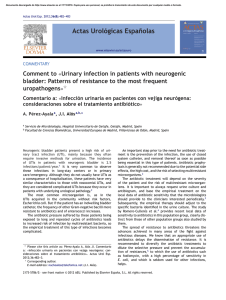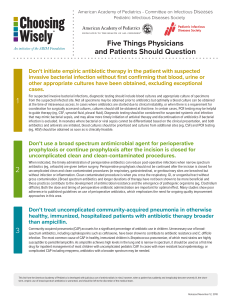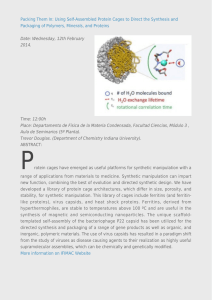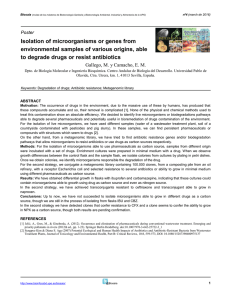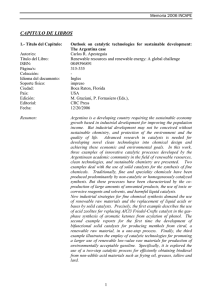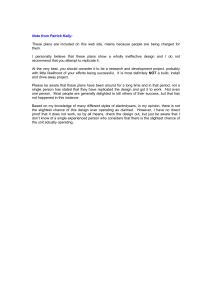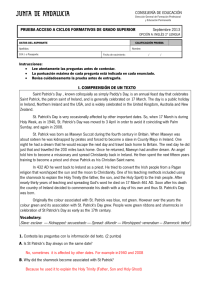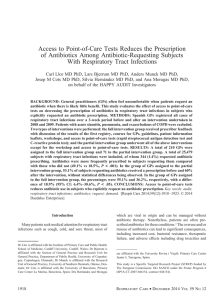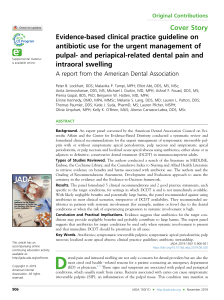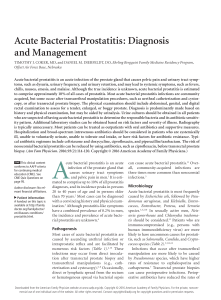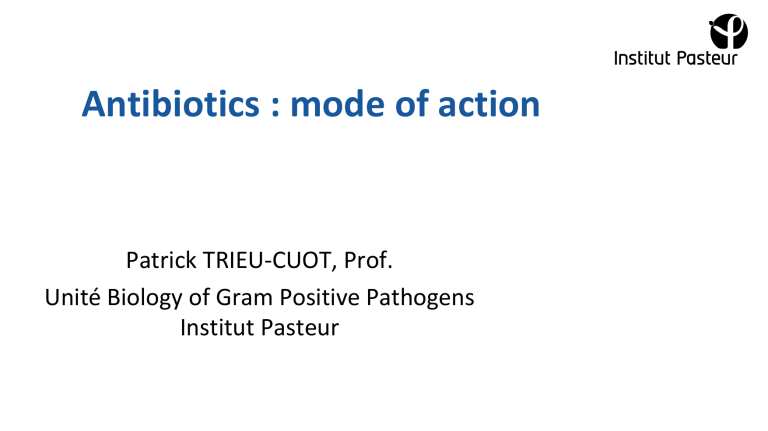
Antibiotics : mode of action Patrick TRIEU-CUOT, Prof. Unité Biology of Gram Positive Pathogens Institut Pasteur Antibiotics Antibiotics, or anti-bacterial agents, are low-molecular weight compounds that interfere with the bacterial growth Ø Most antibiotics are produced by microorganisms : Streptomyces sp. and fungi Penicillin G => Penicillum chrysogenum => Penicillum notatum Streptomycin => Bacillus brevis Streptomyces griseus Tetracycline => Streptomyces aureofaciens Chloramphenicol => Streptomyces venezuelae Erythromycine => Streptomyces erythreus Ø Some antibiotics are chemically syntesized : Quinolones Sulfonamides 2 Patrick TRIEU-CUOT- Antibiotics : mode of action Antibiotics Ø The biosynthesis of an antibiotic by a given micro-organism confers to it a selective advantage towards susceptible bacterial species by inhibiting their growth, in particular in an environment with limiting natural resources. Ø They are therefore very ancient molecules and the ability of certain micro-organisms to synthesize them results from a long evolutionary process. Ø However, penicillin, produced by the mold Penicillium chrysogenum, was characterized in 1929 whereas sulfonamides was chemically synthesized in 1935. Ø Antibiotics were introduced in human medicine in the 1940s. 3 Patrick TRIEU-CUOT- Antibiotics : mode of action Classification Antibiotics could be classified according to : Ø Name of the molecule, different from the commercial name Ø Chemical structure (penicillins, glycopeptides, aminoglycosides, macrolides, ...) Ø Mode of action (cell wall inhibitors, protein synthesis inhibitors) Structurally related antibiotics interact with the same target, as this could be the case for unrelated molecules. 4 Patrick TRIEU-CUOT- Antibiotics : mode of action Mode of action ka Ab + Target Ab-Target kd Ø The target is an enzyme or protein essential for the bacterial growth. Ø The Ab-target complex is inactive. Ø The association constant (Ka) is by far greater than the dissociation constant (Kd). Ø The bacterial target should preferably be absent in mammal cells or should specifically bind the antibiotic. 5 Patrick TRIEU-CUOT- Antibiotics : mode of action Metabolism, cell growth and bacterial cell cycle DNA Replication Transcription RNA Translation Proteins Non-essential functions Essential functions DNA synthesis RNA synthesis Protein synthesis Cell wall synthesis 6 Patrick TRIEU-CUOT- Antibiotics : mode of action Metabolism, cell growth and bacterial cell cycle Gram-negative DNA RNA Gram-positive OM CW Mb 2 3 1 1 Porine Ribosome Protein 1: Cell wall synthesis 2: Nucleic acid synthesis (DNA or RNA) 3: Protein synthesis 7 Patrick TRIEU-CUOT- Antibiotics : mode of action 2 3 Inhibitors of cell wall synthesis Peptidoglycan is a complex tridimensional polymer made of glycan strands cross-linked by short peptides that surrounds the cytoplasmic membrane Ø Beta-lactams inhibit the transpeptidation reaction : penicillins cephalosporins carbapenems Ø Glycopeptides inhibit the transglycosylation and transpeptidation reactions : teicoplanin vancomycin Membrane integrity : Daptomycin Polymyxin B 8 Patrick TRIEU-CUOT- Antibiotics : mode of action Inhibitors of nucleic acid synthesis Ø Synthesis of DNA precursor : sulfonamides (DHPS), trimethoprim (DHFR) Ø DNA Synthesis (DNA gyrase) : quinolones (nalidixic acid) fluoroquinolones (pefloxacin, ciprofloxacin) Ø DNA integrity : metronidazol Ø RNA synthesis (RNA polymerase) : rifampin 9 Patrick TRIEU-CUOT- Antibiotics : mode of action Inhibitors of protein synthesis The ribosome is a complex macromolecule made of two subunits that directs protein synthesis. Ø Ribosomal 30S subunit : tetracyclines, tigecycline aminoglycosides (gentamicin, amikacin, tobramycin, streptomycin) Ø Ribosomal 50S subunit : chloramphenicol macrolides, lincosamides, streptogramins linezolid 10 Patrick TRIEU-CUOT- Antibiotics : mode of action Effects on bacteria Ø Antibiotics could either kill the bacteria or inhibit their growth. Ø Antibiotics interfering with cell wall synthesis and nucleic acid synthesis are generally bactericidal. Ø Antibiotics inhibiting protein synthesis are mostly bacteriostatic with the remarkable exception of aminoglycosides. 11 Patrick TRIEU-CUOT- Antibiotics : mode of action
